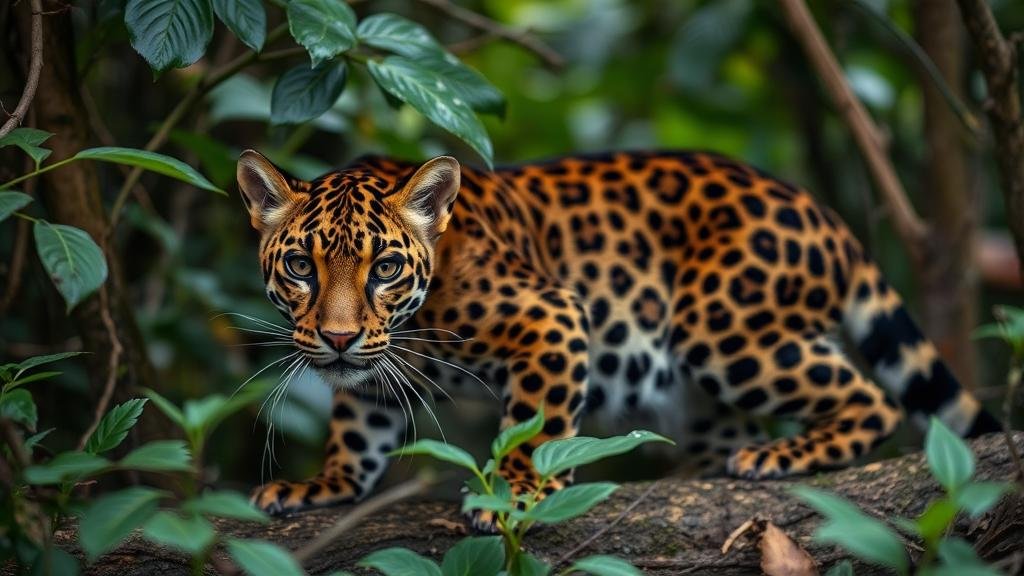Searching for the elusive clouded leopard in Southeast Asia’s rainforests.
Searching for the Elusive Clouded Leopard in Southeast Asias Rainforests
The clouded leopard, scientifically known as Neofelis nebulosa, is a captivating yet elusive feline native to the dense forests of Southeast Asia. Renowned for its beautiful coat, which features dark cloud-like spots, this solitary predator is an apex predator within its habitat, playing a crucial role in maintaining the ecological balance. But, pinpointing the clouded leopard in its natural habitat is not an easy endeavor. In this article, we delve into the reasons behind its elusiveness, the challenges researchers face, and the significance of conservation efforts dedicated to this magnificent species.
Understanding the Clouded Leopard
The clouded leopard can be found in a variety of Southeast Asian countries, including Malaysia, Thailand, Myanmar, and Indonesia. Notably, it inhabits the rainforests of Borneo and Sumatra where the dense foliage provides ample cover for stalking prey, typically involving deer, pigs, and smaller mammals. As a medium-sized cat, the clouded leopard weighs between 25 to 50 pounds, with a body length that can extend up to 4.5 feet.
One of the fascinating characteristics of the clouded leopard is its arboreal lifestyle; it is adept at climbing trees and often hunts for birds and monkeys. Its remarkable flexibility and strong limbs allow it to navigate the treetops effortlessly. Plus, its unique clouded coat provides effective camouflage, allowing it to remain hidden from both prey and potential threats.
The Elusiveness Factor
The difficulty in spotting clouded leopards arises from several factors:
- Dense Habitats: The thick canopies and undergrowth of Southeast Asian rainforests create a complex environment that can obscure visibility and make animal tracking challenging.
- Nocturnal Behavior: Clouded leopards are primarily nocturnal, active during the twilight hours when their hunting activities peak, further complicating the chances of visual encounters.
- Cautious Nature: Being solitary and elusive, they are inherently wary of human presence, often avoiding areas where human activity is notable.
As a result, researchers have developed various methodologies to study clouded leopards without intrusive presence, including camera traps and remote sensing technologies.
Challenges in Conservation
Despite the beauty and ecological importance of the clouded leopard, the population is under significant threat. According to the International Union for Conservation of Nature (IUCN), the clouded leopard is classified as Vulnerable, with populations declining mainly due to habitat destruction and poaching. Data estimates reveal that over 20% of their natural habitat has been lost in the past three decades due to logging, agricultural expansion, and urbanization.
Conservation efforts have primarily focused on:
- Establishing Protected Areas: Initiatives have been launched to create and maintain wildlife reserves where human interference is minimized, allowing populations to thrive.
- Community Engagement: Educating local communities about the importance of clouded leopards and their roles in ecosystems encourages coexistence and fosters conservation advocates.
- Research and Monitoring: Continued support for studies on population dynamics and habitat use help in formulating effective conservation strategies.
Real-World Applications of Research
The study of clouded leopards serves not only to protect this species but has broader implications for rainforest ecology. For example, findings from tracking clouded leopard movements can indicate the health of the ecosystem and highlight critical areas needing protection. Also, understanding their prey dynamics can aid in preserving other species within the same habitat, fostering a holistic approach toward rainforest conservation.
Plus, advancements in technology, such as GPS tracking and drones, are promising exciting applications in wildlife biology. e tools enhance data collection capabilities that can help monitor clouded leopard populations more effectively while minimizing human impact in sensitive areas.
Conclusion
The search for the clouded leopard in the rainforests of Southeast Asia is not only a quest to observe a magnificent creature but also a crucial part of ecological preservation efforts. As their habitats continue to face the pressures of human development, guiding conservation efforts through research, community engagement, and innovative technologies is essential. The protection of the clouded leopard ultimately contributes to the sustainability of entire ecosystems, reminding us of the intricate balance that exists within nature.
As stewards of the environment, it is imperative to support conservation organizations dedicated to the clouded leopard and similar species. Whether through advocacy, donations, or educational outreach, individuals can play a part in preserving the rainforests and the elusive inhabitants within.


